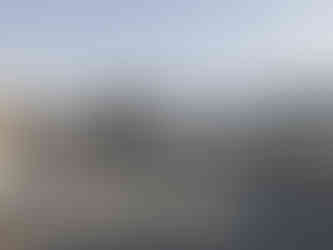Corrosion Factors in Steel Sheet Pile Design
- ESC Steel LLC

- Aug 11, 2021
- 4 min read
Updated: Jun 22
Corrosion is one of the most critical concerns associated with the integrity of nearly all kinds of steel. It is the result of a chemical or electrochemical reaction that steel develops with its surroundings or environment. Corrosion highly affects the durability of any steel structure, including steel sheet pile walls. The rate of corrosion in steel sheet piles depends highly on many factors.
These corrosion parameters vary from project to project and must be identified carefully to come up with effective control measures. Aside from the quality of steel itself, it is basically advantageous to pay attention to the following corrosion catalysts when designing, buying, installing, or working with steel sheet piles.

Moisture
Moisture is one of the major causes of corrosion, which comes from humidity, vapor, or immersion. It increases the electrical conductivity of the environment in contact with the steel surface, thus causing corrosion. The rate at which the moisture will cause corrosion is dependent on the water level and the water type. Sea water is considered more corrosive compared to fresh water due to the salt content in it. Steel sheet piles exposed to changing tide levels are also likely to corrode more than those in stationary bodies.
Steel sheet piles are exposed to different zones where corrosion also occurs with different severities.
Atmospheric Zone. The rate of corrosion in the atmospheric zone is very low within fresh water and depends on distance from water, rainfall, sunshine, and fog within saltwater. It is dependent on the length of time moisture is present at the steel surface, the extent of contamination in the air, and the steel’s chemical composition.
Splash Zone. The zone where the most serious corrosion activity occurs, the splash zone, comprises the area of steel pilings at and immediately above the high tide line, which is subject to frequent wetting from splashing water.
Tidal Zone. The area of relatively low corrosion rates, the tidal zone, is immersed periodically. The metal in this zone benefits from being cathodic to the metal that is slightly below low tide.
Immersion Zone. The small amount of dissolved oxygen at the water-metal interface equates to a low corrosion rate in both salt and freshwater areas that are fully immersed.
Mud layer region. In this area, corrosion is insignificant.
Oxygen
The presence of a significant amount of oxygen along with water and electrolytic environments can cause serious corrosion reactions to occur on a steel surface.
Rust is the result of corroding steel when iron particles are exposed to oxygen and moisture. Oxygen causes these electrons to come to the surface and form hydroxyl ions. The hydroxyl ions react with the ferrous ions to form hydrous iron oxide, better known as rust.
Corrosion can occur with or without oxygen concentration (aerobic or non-aerobic). However, oxygen contained in the air is the main element of atmospheric corrosion.
Atmospheric corrosion is a result of repeated cycles of wet and dry periods. During humid or wet weather, air carries moisture and diffuses everywhere. While in dry weather, especially at high temperatures, air accelerates the evaporation of moisture or water. Constant winds carrying significant amounts of salt and oxygen are a major component in the deterioration of steel sheet piles built in the sea and on waterfronts.

Pollution or contamination
Pollution or contamination is another factor that causes corrosion in steel sheet piles. Some of the pollutants in waterbodies include oil well brines, spilled oils, domestic sewage, and polluted water from industries. These pollutants play a major role in altering the pH balance of water as well as the oxygen level. Where the water is polluted, it is likely to be more acidic, thus increasing the occurrence of corrosion. It is estimated that the degree of acidity or alkalinity of seawater ranges from 7.2 to 8.2. Contaminated water is also likely to have a corrosion effect on the piles due to the chemicals present in the steel. The vegetation present in the marine areas also influences the rate of corrosion likely to occur.
Weather
Weather plays a major role when it comes to corrosion. Wind or gusts can alter wave action and carry salty mist, with the residue of dried salt attracting moisture and continuing corrosion. On the other hand, when rain is retained in crevices, it maintains damp conditions, thus increasing the rate of corrosion.
Chloride
Chlorides present in water are likewise known to accelerate the rate of corrosion. This is because they aid in increasing the electrical conductivity and corrosion current, thus causing rapid rust formation on steel.
The chloride ions present in the water promote local corrosion, such as crevice corrosion and pitting. The higher the chloride content, the more corrosive the water gets.
Soil type
The type of soil where the pile has been driven also determines the rate at which corrosion occurs on the material. Soil with larger particles is likely to hold more oxygen during the backfill or in case of any disturbances, thus enabling corrosion to occur. Additionally, soil with a pH of 7 or more is likely to be acidic, and hence it will be more corrosive to steel.
Key take-aways
Three things are necessary for corrosion to occur: an electrolyte, an exposed metal surface, and an electron acceptor. Corrosion can be prevented by removing one of these conditions.
The major anti-corrosion strategies are:
· The selection of appropriate materials.
· The design of the product.
· Protective methods (Coatings, anodes, etc.)
· Correct installation and maintenance.
· Research, development, and testing.
Ask for help with the corrosion protection of your sheet pile, steel pipes, or other steel product needs. Reach our experts by visiting our website https://www.escsteel.com/ for more information and contact details of our offices near you.




















.png)